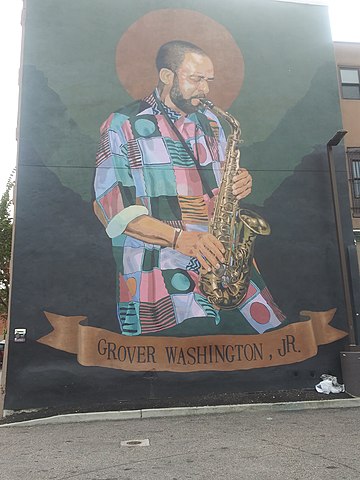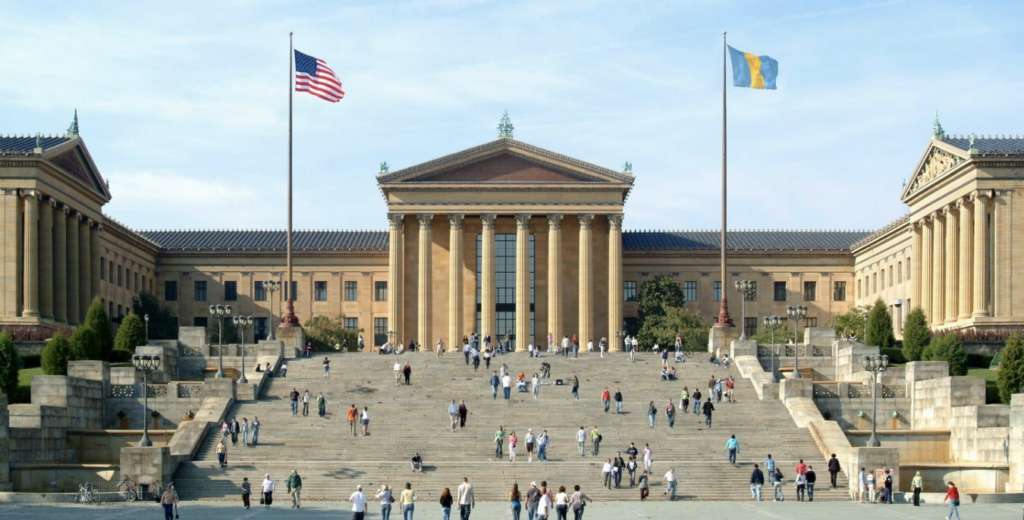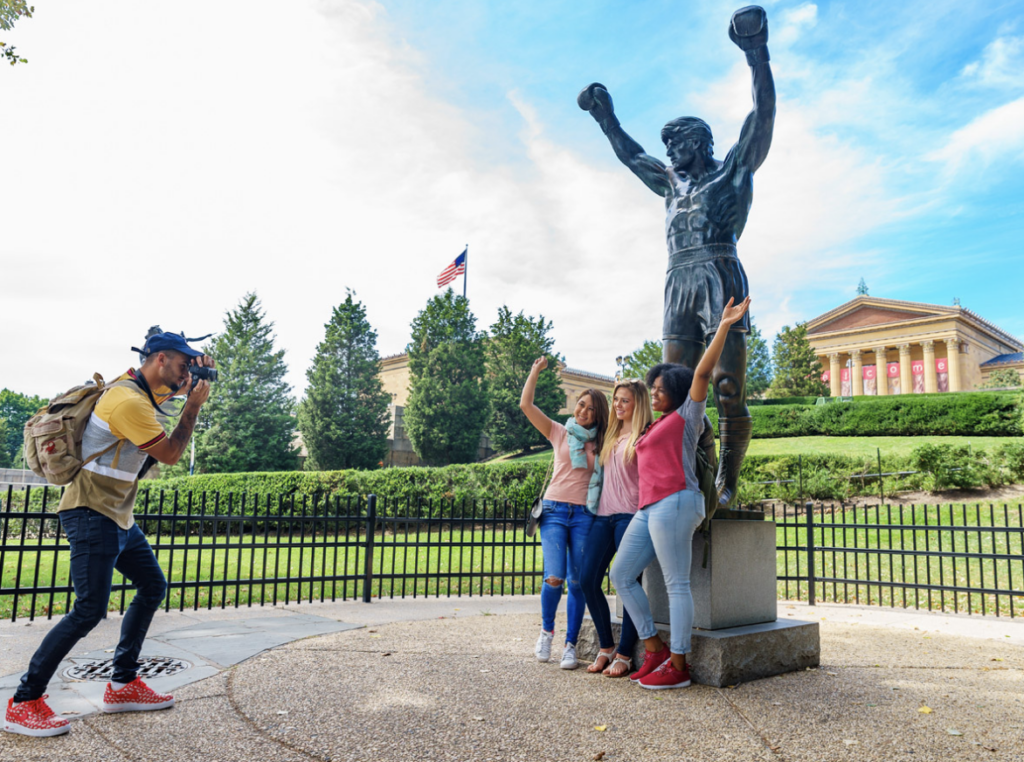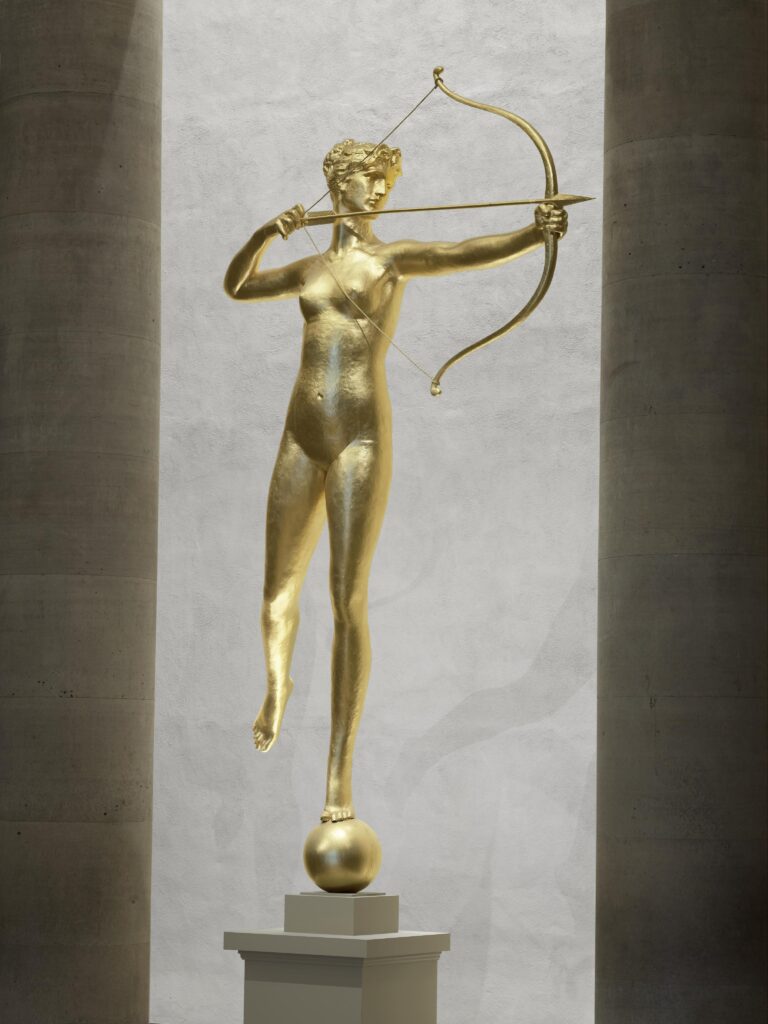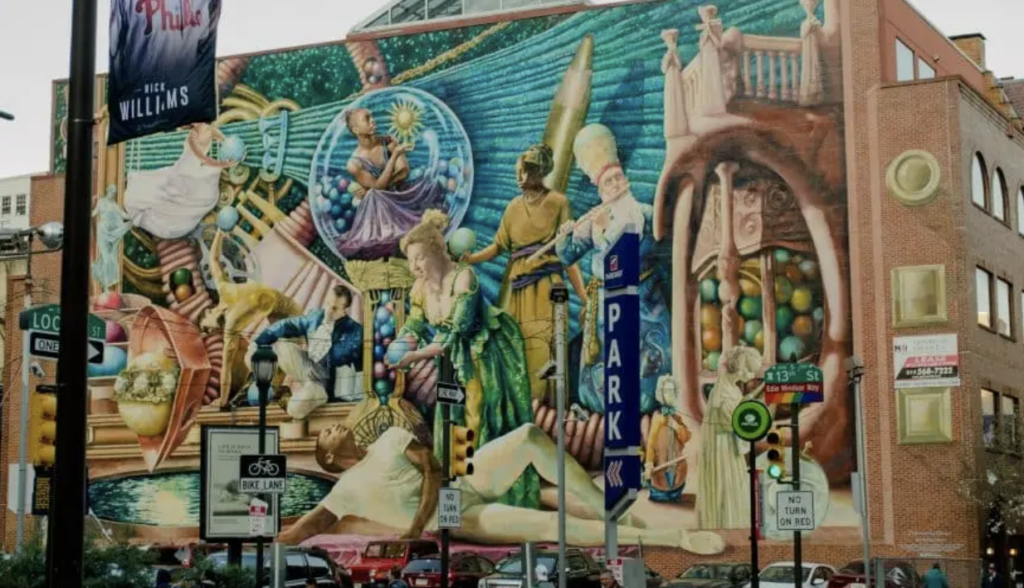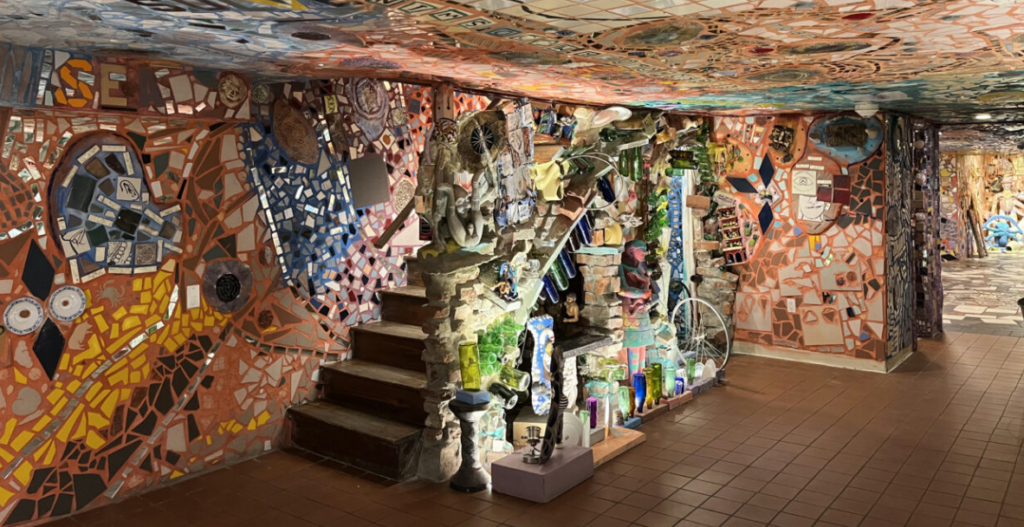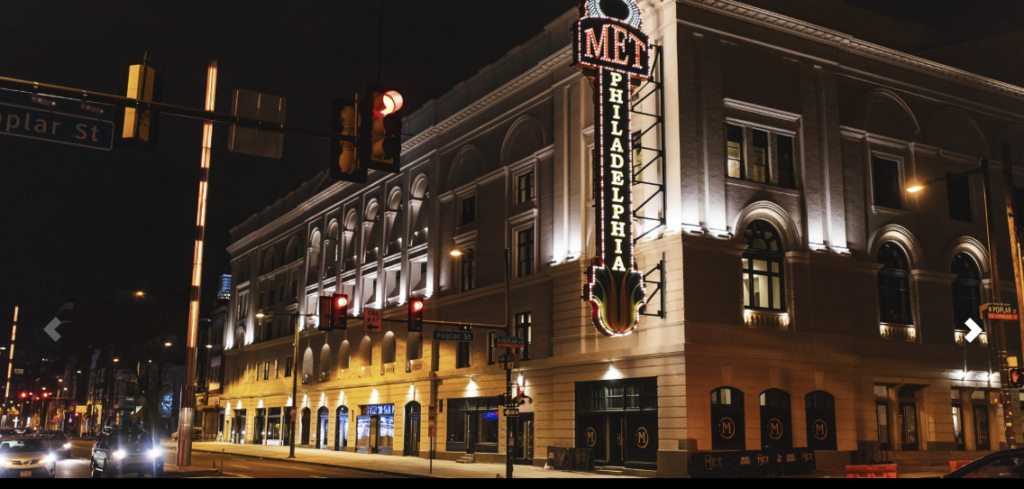My Background
I never wanted to come to Philadelphia. I visited for the first time when I was about 10 years old and I hated it. I remember my family taking a walking tour of the city in the pouring rain as a tour guide rambled on about the history of the city. I didn’t care about some old bell that was displayed in the middle of the city, and I hated history class, so nothing here interested me. There was just something inside of my 10 year old self that had a visceral hatred for Philadelphia. When I was looking for colleges to attend, I only applied to Temple because I heard the dorms were nice. Going into the application process, I thought I would not end up here because of how much I hated this city, but Temple ended up being the best fit for me, despite its location. Starting college, I still did not like Philadelphia, but, over time, I grew to love this place because of how much I’ve tried to embrace the artistic atmosphere that I was previously unaware of.
Art is all around us. We can find it in the obvious places, like in paintings, music, etc. However, we can also find art in some not so obvious places, because it is hidden throughout cities. Philadelphia is a place that is rich with art because of how ingrained it is in the city’s culture. Learning about the history of art and culture in Philadelphia has helped me appreciate the city more because of the existing love I have for the arts.
The main reason I was so against Philadelphia when I first visited was because I didn’t feel inspired here. I’m from Long Island, New York, and I live about 45 minutes outside of New York City, so I got to go there a lot as a kid. I remember taking the train into the city for the first time and walking the streets with my dad and looking up at buildings in awe. I dreamed of being on Broadway or becoming a movie star and living there. New York City was always the dream. As I said before, my first trip to Philadelphia bored me and I had no desire to come back. My visit felt like something straight out of a history class. There was no creativity or culture, or so I thought.
The Philadelphia Museum of Art
Something that really helped me learn to appreciate this city was the Philadelphia Museum of Art. Growing up near New York city, I have always loved going to the Metropolitan Museum of Art and the Museum of Modern Art, so having a big museum like that here was exciting to me, and this museum has been inspiring people for a long time. Although it was officially opened as a museum in general on May 10, 1877, the building sitting on top of Fairmount Hill along the Benjamin Franklin Parkway did not open until March 26, 1928. It was complete with the now iconic stairs that Sylvester Stallone ran up in the movie “Rocky.” Fiske Kimball, the director of the museum at the time of its opening, said that he wanted the museum to “express the world’s artistic culture in all mediums, merging architecture, painting, sculpture, and the decorative arts” (“Our History”). After seeing one million visitors in its first year, the Philadelphia Museum of Art is still flourishing today. It continues to provide an excellent outlet for viewing art from different cultures to citizens and visitors of Philadelphia.
I went to the Philadelphia Museum of Art for the first time in August of 2022, about a week after I moved into my dorm for freshman year. After learning about a lot of the history of the museum, my visit may seem insignificant, but that is what makes it feel so much cooler to me. The art within this cultural institution shows just how much of a staple it is to the city because of how LONG it has been there. It is amazing to think that both myself and visitors from years and years and years ago got to see things like the famous Diana statue (which the museum acquired in the 1930s and still stands in the Great Stair Hall today!) Not to mention how many people have run up the front steps trying to imitate “Rocky.” I love feeling a sense of community with the other people who visit the museum and appreciate the art — it makes me feel more like I fit in and belong in the city. In addition to this feeling of belonging, I just love art in general. I took Art History in high school, and I adored it. It is fascinating to look at how pieces of art are created and what the story and meaning behind them is. Museums make me feel creative and in tune with the artists who have work displayed there, so being able to experience something like that in a city that I didn’t like so much helped me open up to the idea that this place wasn’t all that bad.
Street Art
Another major contributor to my eventual love of Philadelphia was the art that we see on the streets and buildings. It’s one thing to be able to feel inspired by art in a museum, but being able to get that same feeling from simply walking around outside is something special. These murals are mesmerizing and seeing them around the city made me start to fall in love with this place. There are over 4,000 murals in the city of Philadelphia, making it unofficially the “mural capital of the world” (“The Influence of Modern art in Philadelphia”). Branching off of murals, we have graffiti. Graffiti is “a creation of art that portrays people’s emotions, artistic expression, or politics in backdrops, characters, or creative words” (Monopoly). Although some believe that graffiti is a heinous act of vandalism, others believe that is is a wonderful method of artistic self-expression. It is also a very communal art form because different artists had different tags to identify themselves, and artists could compare, contrast, and take inspiration from each other’s styles.
Not only is a graffiti a very prominent form of street art in Philadelphia, but there are also a lot of other “unofficial” art genres that are taking over the public eye. One of these techniques is mosaic art, which can be seen in the Magic Gardens, a “labyrinthine mosaic museum” located on South Street in Philadelphia. Isaiah Zager, the artist behind the Magic Gardens, said that this magnificent creation “begun as a way to revitalize his neighborhood with public art installations” (Bloom). Another street art technique that is seen in Philadelphia are Toynbee tiles. Although the original creator is unknown, these plaques with notes on them are embedded in some streets in Philadelphia. Yarn and textile art is also growing in popularity. Although this art form is sometimes considered vandalism, artists use this technique for various reasons, ranging from sending political messages to simply trying to brighten someone’s day. The wheatpasting and sticker art techniques are also considered vandalism, however, it is still popular in the Northern Liberties, Spring Arts, and Fishtown locations in Philadelphia because of Philadelphia’s “hand-drawn sticker tradition” (Bloom).
I bring all of this into focus as something that makes me feel inspired in Philadelphia because of the creativity it takes to create murals and graffiti. I also love how collaborative this art form is because of how the artists take inspiration from each other. Graffiti artists stemmed from those first murals that were made in 30,000 BCE. You can also trace trends in graffiti and how the style has evolved and changed over time. In addition to all of this, the new techniques that have stemmed from original painted murals show even more creativity because of the unconventional materials. I remember doing a project for my first year seminar in my first month of school that involved a group of my classmates having to walk around the city and look at some of these different murals. This was the first time that I started to realize that the artistic beauty of the city went beyond just the Philadelphia Museum of Art, and it sparked my curiosity and interest in exploring the city further to see more of this street art.
Avenue of the Arts
Maybe my favorite element of culture in Philadelphia is the Avenue of the Arts, which is another indicator of how central the arts are to Philadelphia. This revitalization project was created by former Philadelphia mayor Ed Rendell in 1993. Rendell wanted to “restore Broad Street to its former glory” by bringing the central street in the city back to an arts and culture focus, rather than the automobile-centric wasteland it had become. The Avenue of the Arts was meant to “bring cohesion to Broad Street and to encourage the growth of the artistic community that had thrived there for generations” (“Avenue of the Arts”). One of the buildings along the Avenue of the Arts is the Kimmel Center for the Performing Arts, which is where Philly Pops, Opera Philadelphia, and the Philadelphia Orchestra all perform. There are also multiple theaters along this street, such as the Academy of Music. Temple University’s own campus is actually located on the same street as the Avenue of the Arts. Although North Broad Street is not typically associated with this Avenue, Temple has a very large art scene. The Tyler School of Art, the Temple Performing Arts Center, and the School of Theater, Film, and Media Arts are important to Temple University, and Temple’s Liacouras Center holds the title of the “largest performing arts venue on the Avenue of the Arts” (“Avenue of the Arts”).
The reason that the Avenue of the Arts is probably my favorite element of culture in Philadelphia is because the atmosphere you experience at a live event is something unlike anything else. My freshman year of college began right around the time that live events started being able to happen again after the COVID-19 pandemic, and I remember initially feeling extremely nervous to go out to live shows again, especially in a city I was unfamiliar with. Though I was hesitant, I am so glad that I pushed myself to explore and experience these live venues in Philadelphia because they have been some of my favorite memories I’ve made in the city. I’ve gone to comedy shows, concerts, drag shows, etc., and each one is better than the last. I live down the street from the Met Philadelphia, and being able to see lines of people getting ready to see shows there is great. The excitement in the air from the crowd is electric. Not to mention the energy that Temple’s own on-campus artistic community brings to daily life here. Being involved in the media studies program has been an amazing experience because of the great energy and creativity everyone has, and I am grateful for everyone I have been able to meet through it.
My Final Thoughts
Now I’m not going to say that Philadelphia will ever live up to New York City in my eyes, because that is honestly a lie. New York will always be on a pedestal for me because of my own history with it. Learning about Philadelphia’s cultural history and how it has shaped the city today, however, has changed my view on it greatly. I thought that no city could ever compare to New York in terms of the inspiration I feel there. As I said before, New York was always the dream. Though, now that I have gotten to know and love Philadelphia, I think I may have found a new place where my dream can grow.
